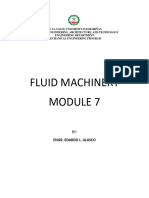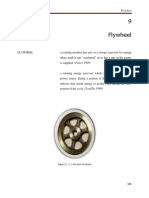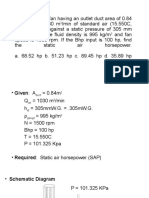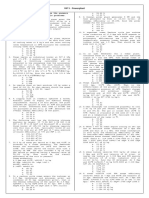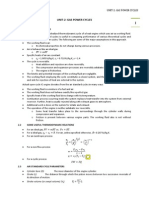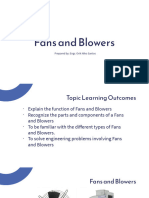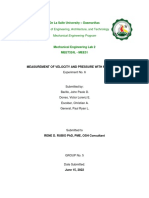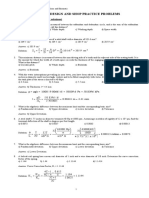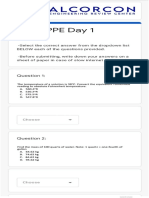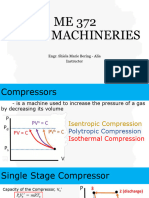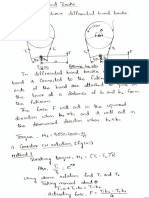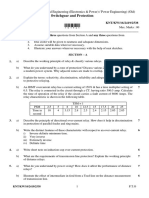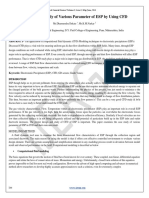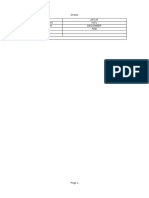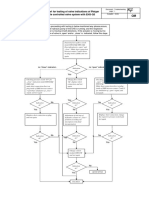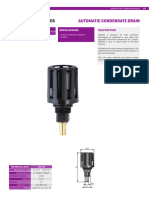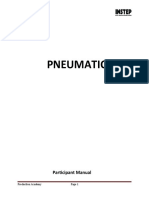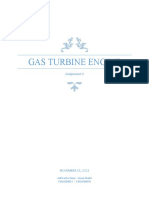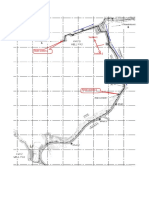MODULE-VI --- RECIPROCATING COMPRESSOR
APPLIED THERMODYNAMICS
VTU-NPTEL-NMEICT
Project Progress Report
The Project on Development of Remaining Three Quadrants to
NPTEL Phase-I under grant in aid NMEICT, MHRD, New Delhi
Subject Matter Expert Details
Dr.A.R.ANWAR KHAN
Prof & H.O.D
Dept of Mechanical Engineering
oj
ec
t
SME Name :
Course Name:
Pr
Applied Thermodynamics
Type of the Course
-N
EI
C
T
web
VI
-N
PT
EL
Module
VT
DEPARTMENT OF MECHANICAL ENGINEERING,
GHOUSIA COLLEGE OF ENGINEERING,
RAMANARA -562159
Dr. A.R. ANWAR KHAN,Prof & HOD, GHOUSIA COLLEGE OF ENGINERING, RAMANAGARA
Page 1 of 30
2014
�MODULE-VI --- RECIPROCATING COMPRESSOR
APPLIED THERMODYNAMICS
CONTENTS
Sl.
No.
DISCRETION
1.
Quadrant -2
a. Animations.
b. Videos.
2.
Quadrant -3
Pr
a. Wikis.
oj
ec
t
c. Illustrations.
EI
C
T
b. Open Contents
3.
EL
-N
Quadrant -4
PT
a. Problems.
-N
b. Assignments
VT
c. Self Assigned Q & A.
d. Test your Skills.
Dr. A.R. ANWAR KHAN,Prof & HOD, GHOUSIA COLLEGE OF ENGINERING, RAMANAGARA
Page 2 of 30
2014
�MODULE-VI --- RECIPROCATING COMPRESSOR
APPLIED THERMODYNAMICS
2014
MODULE-VI
RECIPROCATING COMPRESSOR
QUADRANT-2
Animations
http://www.youtube.com/watch?v=E6_jw841vKE
http://www.youtube.com/watch?v=ITCu7gNMicc
http://bin95.com/swf/air-compressor-review.swf
http://www.machinerylubrication.com/Read/488/compressor-lubricants
http://www.slideshare.net/julsaez/compressor-basis-10733805
http://www.egpet.net/library/reciprocating-compressor-compressor-animation-2video_06b782a66.html
7) http://www.brighthubengineering.com/hvac/51688-principle-of-working-ofrefrigeration-reciprocating-compressors/
8) http://www.training-classes.com/programs/05/73/57384_air_compressor_training.php
C
T
Pr
oj
ec
t
1)
2)
3)
4)
5)
6)
EI
Videos
EL
-N
http://www.4shared.com/video/Fyu2XA3O/YouTube_-_Reciprocating_Compre.htm
PT
http://www.yourepeat.com/watch/?v=hGACRR_FETs
-N
http://youviddy.com/video/wkuXz2YrwPs/reciprocating-compressor-an-introduction-tovibration.html
VT
http://www.metacafe.com/watch/3374356/simple_reciprocating_pump/
http://wn.com/rotary_vs_reciprocating_air_compressors
http://www.savevid.com/video/reciprocating-commercial-electrolux-and-tecumsehcompressors.html
http://www.vidoevo.com/yvideo.php?i=N0JLN1ZKcWuRpRDhZT1k&how-a-two-stage-airpressor-works
http://www.vidoevo.com/yvideo.php?i=NEdWOFA2cWuRpbmpOaEE&final-pressoranimation
Dr. A.R. ANWAR KHAN,Prof & HOD, GHOUSIA COLLEGE OF ENGINERING, RAMANAGARA
Page 3 of 30
�MODULE-VI --- RECIPROCATING COMPRESSOR
2014
APPLIED THERMODYNAMICS
ILLUSTRATIONS
INTRODUCTION TO COMPRESSOR:
Compressors are work absorbing devices which are used for increasing pressure of fluid at
the expense of work done on fluid. The compressors used for compressing air are called air
compressors. Compressors are invariably used for all applications requiring high pressure air.
Some of popular applications of compressor are, for driving pneumatic tools and air operated
equipments, spray painting, compressed air engine, supercharging in internal combustion
oj
ec
t
engines, material handling (for transfer of material), surface cleaning, refrigeration and air
conditioning, chemical industry etc. Compressors are supplied with low pressure air (or any
Pr
fluid) at inlet which comes out as high pressure air (or any fluid) at outlet. Work required for
C
T
increasing pressure of air is available from the prime mover driving the compressor.
Generally, electric motor, internal combustion engine or steam engine, turbine etc. are used
EI
as prime movers. Compressors are similar to fans and blowers but differ in terms of pressure
while
compressors
have
-N
pressure
ratios
more
than
4.
VT
-N
PT
EL
and
ratios. Fan is said to have pressure ratio up to 1.1 and blowers have pressure ratio between 1.1
CLASSIFICATION OF COMPRESSORS:
Compressors can be classified in the following different ways.
(a) Based on principle of operation: Based on the principle of operation compressors can be
classified as,
(i) Positive displacement compressors
(ii) Non-positive displacement compressors
In positive displacement compressors the compression is realized by displacement of solid
boundary and preventing fluid by solid boundary from flowing back in the direction of
pressure gradient. Due to solid wall displacement these are capable of providing quite large
Dr. A.R. ANWAR KHAN,Prof & HOD, GHOUSIA COLLEGE OF ENGINERING, RAMANAGARA
Page 4 of 30
�MODULE-VI --- RECIPROCATING COMPRESSOR
2014
APPLIED THERMODYNAMICS
pressure ratios. Positive displacement compressors can be further classified based on the type
of mechanism used for compression. These can be Reciprocating and Rotary Compressor
(i) Reciprocating type positive displacement compressors
(ii) Rotary type positive displacement compressors
Reciprocating
compressors
generally,
employ
piston-cylinder
arrangement
where
displacement of piston in cylinder causes rise in pressure. Reciprocating compressors are
capable of giving large pressure ratios but the mass handling capacity is limited or small.
Reciprocating compressors may also be single acting compressor or double acting
compressor. Single acting compressor has one delivery stroke per revolution while in double
oj
ec
t
acting there are two delivery strokes per revolution of crank shaft. Rotary compressors
employing positive displacement have a rotary part whose boundary causes positive
Pr
displacement of fluid and thereby compression. Rotary compressors of this type are available
C
T
in the names as given below;
(i) Roots blower
EI
(ii) Vaned type compressors
-N
Rotary compressors of above type are capable of running at higher speed and can handle
EL
large mass flow rate than reciprocating compressors of positive displacement type. Non-
PT
positive displacement compressors, also called as steady flow compressors use dynamic
-N
action of solid boundary for realizing pressure rise. Here fluid is not contained in definite
volume and subsequent volume reduction does not occur as in case of positive displacement
VT
compressors. Non-positive displacement compressor may be of axial flow type or
centrifugal type depending upon type of flow in compressor.
(b) Based on number of stages: Compressors may also be classified on the basis of number
of stages. Generally, the number of stages depends upon the maximum delivery pressure.
Compressors can be single stage or multistage. Normally maximum compression ratio of 5
is realized in single stage compressors. For compression ratio more than 5 the multi-stage
Compressors are used. Typical values of maximum delivery pressures generally available
from different types of compressor are,
(i) Single stage compressor, for delivery pressure up to 5 bar
(ii) Two stage compressor, for delivery pressure between 5 and 35 bar
(iii) Three stage compressor, for delivery pressure between 35 and 85 bar
Dr. A.R. ANWAR KHAN,Prof & HOD, GHOUSIA COLLEGE OF ENGINERING, RAMANAGARA
Page 5 of 30
�MODULE-VI --- RECIPROCATING COMPRESSOR
APPLIED THERMODYNAMICS
2014
(iv) Four stage compressor, for delivery pressure more than 85 bar
(c) Based on capacity of compressors: Compressors can also be classified depending upon the
capacity of compressor or air delivered per unit time. Typical values of capacity for different
compressors are given as;
(i) Low capacity compressors, having air delivery capacity of 0.15 m 3 /s or less
(ii) Medium capacity compressors, having air delivery capacity between 0.15 and 5 m 3 /s.
(iii) High capacity compressors, having air delivery capacity more than 5 m 3 /s.
(d) Based on highest pressure developed: Depending upon the maximum pressure available
oj
ec
t
from compressor they can be classified as low pressure, medium pressure, high pressure and
super high pressure compressors. Typical values of maximum pressure developed for
Pr
different compressors are as under;
C
T
(i) Low pressure compressor, having maximum pressure up to 1 bar
(ii) Medium pressure compressor, having maximum pressure from 1 to 8 bar
EI
(iii) High pressure compressor, having maximum pressure from 8 to 10 bar
-N
(iv) Super high pressure compressor, having maximum pressure more than 10 bar.
EL
THERMODYNAMIC ANALYSIS ON COMPRESSOR:
PT
Compression of air in compressor may be carried out following number of thermodynamic
-N
processes such as isothermal compression, polytropic compression or adiabatic compression.
Figure shows the thermodynamic cycle involved in compression. Theoretical cycle is shown
VT
neglecting clearance volume but in actual cycle clearance volume can not be negligible.
Clearance volume is necessary in order to prevent collision of piston with cylinder head,
accommodating valve mechanism etc. Compression process is shown by process 12, 12,
12 following adiabatic, polytropic and isothermal processes.
On p-V diagram process 41 shows the suction process followed by compression during 12
and discharge through compressor is shown by process 23. Air enters compressor at
pressure p 1 and is compressed up to p 2 . Compression work requirement can be estimated
from the area below the each compression process. Area on pV diagram shows that work
requirement shall be minimum with isothermal process 12. Work requirement is maximum
with process 12 i.e. adiabatic process. As a designer one shall be interested in a compressor
having minimum compression work requirement. Therefore, ideally compression should
occur isothermally for minimum work input. In practice it is not possible to have isothermal
Dr. A.R. ANWAR KHAN,Prof & HOD, GHOUSIA COLLEGE OF ENGINERING, RAMANAGARA
Page 6 of 30
�MODULE-VI --- RECIPROCATING COMPRESSOR
APPLIED THERMODYNAMICS
2014
compression because constancy of temperature during compression cannot be realized.
Generally, compressors run at substantially high speed while isothermal compression requires
compressor to run at very slow speed so that heat evolved during compression is dissipated
out and temperature remains constant. Actually due to high speed running of compressor the
compression process may be assumed to be near adiabatic or polytropic process following
law of compression as PV
= C with value of n varying between 1.25 and 1.35 for air.
Compression process following three processes is also shown on T-s diagram. It is thus
obvious that actual compression process should be compared with isothermal compression
process. A mathematical parameter called isothermal efficiency is defined for quantifying the
degree of deviation of actual compression process from ideal compression process.
VT
-N
reciprocating compressor.
PT
EL
-N
EI
C
T
Pr
oj
ec
t
Isothermal efficiency is defined by the ratio of isothermal work and actual indicated work in
Isothermal efficiency = Isothermal work/Actual indicated work
Practically, compression process is attempted to be closed to isothermal process by
air/water cooling, spraying cold water during compression process. In case of multistage compression process the compression in different stages is accompanied by
intercooling in between the stages. Mathematically, for the compression work
following polytropic process, PVn = C. Assuming negligible clearance volume the
cycle work done,
W c = Area on p-V diagram
Dr. A.R. ANWAR KHAN,Prof & HOD, GHOUSIA COLLEGE OF ENGINERING, RAMANAGARA
Page 7 of 30
�MODULE-VI --- RECIPROCATING COMPRESSOR
APPLIED THERMODYNAMICS
2014
Pr
oj
ec
t
In case of compressor having isothermal compression process, n = 1, i.e. P1 V1 = P1
V2
W c, iso = P2 V 2 + P1 V1 ln r P1 V1
C
T
W c, iso =P1 V1 ln r, where r =
In case of compressor having adiabatic compression process, n =
EI
-N
PT
EL
-N
VT
The isothermal efficiency of a compressor should be close to 100% which means that
actual compression should occur following a process close to isothermal process.
Considering clearance volume: With clearance volume the cycle is represented on
Fig. The work done for compression of air polytropically can be given by the area
enclosed in cycle 1234. Clearance volume in compressors varies from 1.5% to
35% depending upon type of compressor.
Here
= ,
Dr. A.R. ANWAR KHAN,Prof & HOD, GHOUSIA COLLEGE OF ENGINERING, RAMANAGARA
Page 8 of 30
�MODULE-VI --- RECIPROCATING COMPRESSOR
APPLIED THERMODYNAMICS
2014
For single acting compressor running with N rpm, power input required, assuming
clearance volume.
Pr
oj
ec
t
for double acting compressor,
Volumetric efficiency: Volumetric efficiency of compressor is the measure of the
C
T
deviation from volume handling capacity of compressor. Mathematically, the
EI
volumetric efficiency is given by the ratio of actual volume of air sucked and swept
volume of cylinder. Ideally the volume of air sucked should be equal to the swept
-N
volume of cylinder, but it is not so in actual case. Practically the volumetric efficiency
EL
lies between 60 and 90%. Volumetric efficiency can be overall volumetric efficiency
VT
OR
-N
PT
and absolute volumetric efficiency as given below:
Dr. A.R. ANWAR KHAN,Prof & HOD, GHOUSIA COLLEGE OF ENGINERING, RAMANAGARA
Page 9 of 30
�MODULE-VI --- RECIPROCATING COMPRESSOR
APPLIED THERMODYNAMICS
QUADRANT-3
Wikis:
1 http://petrowiki.org/Reciprocating_compressor
2) http://en.wikipedia.org/wiki/Gas_compressor
EI
C
T
Pr
oj
ec
t
3) http://demonstrations.wolfram.com/ReciprocatingCompressorWithAnIntercooler/
4) http://en.wikipedia.org/wiki/Reciprocating_compressor
5) http://en.wikipedia.org/wiki/Air_compressor
6) http://www.ask.com/question/what-is-a-reciprocating-compressor
7) http://petrowiki.org/Reciprocating_compressor
8) http://cair.wikia.com/wiki/Compressor
9) http://www.roymech.co.uk/Related/Thermos/Thermos_Air_com_mot.html
10) http://www.authorstream.com/Presentation/venumanu2008-1709112-compressors/
EL
-N
Open Contents:
PT
Applied Thermodynamics by R. K. Rajput
-N
Applied Thermodynamics for Engineering Technologists by Eastop
VT
Applied Thermodynamics by B. K. Venkanna B. V. S
Basic and Applied Thermodynamics by Nag
Applied Thermodynamics by D. S. Kumar
A textbook of applied thermodynamics, steam and thermal ... by S. K. Kulshrestha
Applied thermodynamics by Anthony Edward John Hayes
Dr. A.R. ANWAR KHAN,Prof & HOD, GHOUSIA COLLEGE OF ENGINERING, RAMANAGARA
Page 10 of 30
2014
�MODULE-VI --- RECIPROCATING COMPRESSOR
APPLIED THERMODYNAMICS
2014
QUADRANT-4
Problems
1) A reciprocating air compressor has cylinder with 24 cm bore and 36 cm stroke.
Compressor admits air at 1 bar, 17C and compresses it up to 6 bar. Compressor runs at
120 rpm. Considering compressor to be single acting and single stage determine mean
effective pressure and the horse power required to run compressor when it compresses
following the isothermal process and polytropic process with index of 1.3. Also find
oj
ec
t
isothermal efficiency when compression is of polytropic and adiabatic type.
Solution:
=6=r
Pr
Compression ratio =
24)2
C
T
From cylinder dimensions the stroke volume =
= 0.01628 m3
EI
Volume of air compressed per minute = 0.01628 X 120= 1.954 m3/min
-N
EL
Work done in isothermal process
Let us neglect clearance volume.
= P1 V1 ln r
VT
-N
PT
Mean effective pressure in isothermal process
= P1 V1 ln r / V1
= P1 ln r
=1
102 ln 6 = 179.18 kPa
Work done in polytropic process with index n = 1.3, i.e. PV1.3 = C
=
Mean effective pressure in polytropic process,
Dr. A.R. ANWAR KHAN,Prof & HOD, GHOUSIA COLLEGE OF ENGINERING, RAMANAGARA
Page 11 of 30
�MODULE-VI --- RECIPROCATING COMPRESSOR
=
APPLIED THERMODYNAMICS
2014
221.89 kPa
Work done in adiabatic process,
Mean effective pressure in adiabatic process,
/( -1)
= 233.98 kPa
oj
ec
t
Horse power required for isothermal process ,
(As 1 hp = 0.7457 kW)
C
T
-N
Horse power required for polytropic process,
Pr
= 7.825 hp
EI
= 9.69 hp
EL
PT
Horse power required for adiabatic process,
= 10.22 hp
-N
VT
Isothermal efficiency = Isothermal process power required/ Actual power required
= 0.8075 or 80.75%
= 0.7657 or 76.57%
2) A single stage single acting reciprocating air compressor has air entering at 1 bar, 20C
and compression occurs following polytropic process with index 1.2 upto the delivery
pressure of 12 bar. The compressor runs at the speed of 240 rpm and has L/D ratio of 1.8.
The compressor has mechanical efficiency of 0.88. Determine the isothermal efficiency
Dr. A.R. ANWAR KHAN,Prof & HOD, GHOUSIA COLLEGE OF ENGINERING, RAMANAGARA
Page 12 of 30
�MODULE-VI --- RECIPROCATING COMPRESSOR
APPLIED THERMODYNAMICS
2014
and cylinder dimensions. Also find out the rating of drive required to run the compressor
which admits 1 m3 of air perminute.
Solution:
Using perfect gas equation the mass of air delivered per minute can be obtained as,
m=
= 1.189 kg/min
Compression process follows PV1.2 = constt.
C
T
Pr
oj
ec
t
Temperature at the end of compression;
EI
443.33 K
-N
Work required during compression process W=
PT
EL
-N
W = 307.79 kJ/min = 307.79/(60 0.7457)hp
VT
W = 6.88 hp
Capacity of drive required to run compressor = 6.88/0.88= 7.82 hp
Isothermal work required for same compression,
= 1.189 0.287 293
= 248.45 kJ/min
Isothermal efficiency = Isothermal work /Actual work = 248.45 / 307.79 = 0.8072
Volume of air entering per cycle = 1/240= 4.167 103 m3/cycle
Volume of cylinder = 4.167 103 = (
D2 L
Dr. A.R. ANWAR KHAN,Prof & HOD, GHOUSIA COLLEGE OF ENGINERING, RAMANAGARA
Page 13 of 30
�MODULE-VI --- RECIPROCATING COMPRESSOR
APPLIED THERMODYNAMICS
2014
= 4.167 103 = (
Bore, D = 0.1434 m or 14.34 cm
Stroke length L = 1.8 D = 1.8 14.34 = 25.812 cm
3) A reciprocating compressor of single stage and double acting type is running at 200 rpm
with mechanical efficiency of 85%. Air flows into compressor at the rate of 5 m3/min
measured at atmospheric condition of 1.02 bar, 27C. Compressor has compressed air
leaving at 8 bar with compression following polytropic process with index of 1.3.
Compressor has clearance volume of 5% of stroke volume. During suction of air from
oj
ec
t
atmosphere into compressor its temperature rises by 10C. There occurs pressure loss of
0.03 bar during suction and pressure loss of 0.05 bar during discharge passage through
Pr
valves. Determine the dimensions of cylinder, volumetric efficiency and power input
C
T
required to drive the compressor if stroke to bore ratio is 1.5.
Solution:
EI
Considering the losses at suction and discharge, the actual pressure at suction and delivery
shall be as under.
-N
Atmospheric pressure, Pa = 1.02 bar, Ta = 273 + 27 = 300 K, Va = 5 m3/min
PT
T1 = 300 + 10 = 310 K
EL
Pressure at suction, P1 = 1.02 0.03 = 0.99 bar
-N
Pressure at delivery, P2 = 8 + 0.05 = 8.05 bar
V1 =
VT
Volume corresponding to suction condition of P1, T1,
= (1.02 310 5)/0.99 300 = 5.32 m3/min
W=
W=
= 23.66 kW or 31.73 hp
Power input required = 31.7 / 0.85= 37.33 hp
Dr. A.R. ANWAR KHAN,Prof & HOD, GHOUSIA COLLEGE OF ENGINERING, RAMANAGARA
Page 14 of 30
�MODULE-VI --- RECIPROCATING COMPRESSOR
APPLIED THERMODYNAMICS
Volumetric efficiency,
2014
C = 0.05,
= 0.7508 or 75.08%
200) = 0.0125 m3/cycle
Stroke volume per cycle = 5/ (2
Actual stroke volume taking care of volumetric efficiency = 0.0125/0.7508 = 0.0167 m3/cycle
Stroke volume = 00.0167 = (
=00.0167 = (
D2 L
D2 1.5D
oj
ec
t
D = 0.2420 m or 24.20 cm
Pr
Stroke L = 1.5 D = 36.3 cm
C
T
4) A reciprocating air compressor has four stage compression with 2 m 3 /min of air being
EI
delivered at 150 bar when initial pressure and temperature are 1 bar, 27C. Compression
occur polytropically following polytropic index of 1.25 in four stages with perfect
-N
intercooling between stages. For the optimum intercooling conditions determine the
EL
intermediate pressures and the work required for driving compressor.
PT
Solution:
conditions.
-N
Here there is four stage compression with perfect intercooling at optimum intercooling
= 3.499 = 3.5
VT
So optimum stage pressure ratio =
Intermediate pressure shall be as follows:
Between Ist and IInd stage = 3.5 bar
Between IInd and IIIrd stage = 12.25 bar
Between IIIrd and IVth stage = 42.87 bar
Intermediate pressure: 3.5 bar, 12.25 bar, 42.87 bar.
Since it is perfect intercooling so temperature at inlet of each stage will be
300K.
So temperature at the end of fourth stage,
Dr. A.R. ANWAR KHAN,Prof & HOD, GHOUSIA COLLEGE OF ENGINERING, RAMANAGARA
Page 15 of 30
�MODULE-VI --- RECIPROCATING COMPRESSOR
APPLIED THERMODYNAMICS
2014
T = 385.42 K
Mass of air, kg/min, m =
= 271.21 kg/min
Work required for driving compressor,
W=
Pr
=132978.04 kJ/min or 2972.11 hp Work input = 2972.11 hp
oj
ec
t
W=
C
T
5) In a two stage reciprocating air compressor running at 200 rpm the air is admitted at 1 bar,
17C and discharged at 25 bar. At low pressure stage suction conditions the rate of air flow is
EI
4 kg/minute. The low pressure cylinder and high pressure cylinders have clearance volumes
-N
of 4% and 5% of respective cylinder stroke volumes. The index for compression and
expansion processes in two stages are sameas 1.25. Considering an optimum and perfect
EL
intercooling in between two stages determine the power required, isothermal efficiency, free
Solution:
-N
PT
air delivered, heat transferred in each cylinder and the cylinder volumes
=5
VT
For the optimum intercooling the pressure ratio in each stage =
Dr. A.R. ANWAR KHAN,Prof & HOD, GHOUSIA COLLEGE OF ENGINERING, RAMANAGARA
Page 16 of 30
�MODULE-VI --- RECIPROCATING COMPRESSOR
APPLIED THERMODYNAMICS
Perfect intercooling indicates, T 1 = T 5 = 273 + 17 = 290 K
= 400.12 K
= 400.12 K
Pr
oj
ec
t
Actual compression work requirement, W = W HP + W LP
EI
C
T
W = 1264.19 kJ/min or 28.25 hp
-N
= 1071.63 kJ/min
PT
EL
-N
Work requirement if the process is isothermal compression,
= 0.8477 or 84.77%
VT
Isothermal efficiency =
= 3.33 m3 /min
Free air delivered =
Heat transferred in HP cylinder = Heat transferred in LP cylinder = Q
(Due to optimum and perfect intercooling)
Q=
Q=
Q = 190.21 kJ/min
Dr. A.R. ANWAR KHAN,Prof & HOD, GHOUSIA COLLEGE OF ENGINERING, RAMANAGARA
Page 17 of 30
2014
�MODULE-VI --- RECIPROCATING COMPRESSOR
APPLIED THERMODYNAMICS
2014
Volumetric efficiency,
Here the ambient conditions and suction conditions are same so expression gets modified as,
Volumetric efficiency of HP,
= 1 + 0.04 0.04 (5) 1/1.25
C HP = 0.04
oj
ec
t
= 0.895 or 89.5%
Pr
Volumetric efficiency of LP,
C
T
CLP = 0.05
-N
= 3.721 103 m3
EL
Vs HP =
EI
= 1 + 0.05 0.05 (5)1/1.25 = 0.8688 or 86.88%
PT
Clearance volume, Vc, HP = 0.05 3.721
103 = 1.861
10 4 m 3
-N
Total HP cylinder volume, V HP = V s, HP + V c, HP = 3.907 10 3 m 3
V c, HP = Clearance volume of HP
VT
Stroke volume of LP cylinder =Free air delivery / (Speed
= 3.33/(2000.8688) =V s, LP = 0.01916 m3
Clearance volume, V c, LP = 0.04 V s, LP = 7.66410 4 m 3
Total LP cylinder volume, V LP = V s, LP + V c, LP = 0.019926 m3
6) A two stage double acting reciprocating air compressor running at 200 rpm has air entering
at 1 bar, 25C. The low pressure stage discharges air at optimum intercooling pressure into
intercooler after which it enters at 2.9 bar, 25C into high pressure stage. Compressed air
leaves HP stage at 9 bar. The LP cylinder and HP cylinder have same stroke lengths and
equal clearance volumes of 5% of respective cylinder swept volumes. Bore of LP cylinder is
30 cm and stroke is 40 cm. Index of compression for both stages may be taken as 1.2.
Dr. A.R. ANWAR KHAN,Prof & HOD, GHOUSIA COLLEGE OF ENGINERING, RAMANAGARA
Page 18 of 30
�MODULE-VI --- RECIPROCATING COMPRESSOR
APPLIED THERMODYNAMICS
2014
Determine, (i) the heat rejected in intercooler, (ii) the bore of HP cylinder, (iii) the hp
required to drive the HP cylinder.
SOLUTION:
Optimum intercooling pressure =
= 3 bar
LP stage pressure ratio = HP stage pressure ratio = 3
From the given dimensions of LP cylinder, the volume of LP cylinder, in m3 /min
V LP
V LP = 11.31 m3 /min
EI
C
T
Pr
oj
ec
t
Volumetric efficiency of LP compressor, here ambient and suction conditions are same,
-N
= 0.9251 or 92.51%
EL
Volume of air inhaled in LP stage = V LP
PT
= 11.31 0.9251
VT
-N
= 10.46 m3 /min
Mass of air per minute, m =
Temperature after compression in LP stage,
T 2 = 357.88 K
Dr. A.R. ANWAR KHAN,Prof & HOD, GHOUSIA COLLEGE OF ENGINERING, RAMANAGARA
Page 19 of 30
�MODULE-VI --- RECIPROCATING COMPRESSOR
APPLIED THERMODYNAMICS
Volume of air going into HP cylinder
2014
, After intercooling, T5 = 298 K, P5 = 2.9
bar,
V5 = 3.61 m 3 /min
Since the clearance volume fraction and pressure ratio for both HP and LP stages are same so
the
volumetric efficiency of HP stage referred to LP stage suction condition shall be same
oj
ec
t
Hence, the volume of HP cylinder/min
Let bore of HP cylinder be DHP
2 200
Pr
DHP2 0.40
3.902 = (
Heat rejected in intercooler, Q = m Cp (T2 T5)
C
T
DHP = 0.1762 m or 17.62 cm
EI
= 12.23 1.0032 (357.88 298)
-N
= 734.68 kJ/min
-N
T 6 = 359.91 K
PT
EL
In HP stage,
VT
Work input required for HP stage,
W HP = 1303.62 kJ/min
or W HP = 29.14 hp
7) During an experiment on reciprocating air compressor the following observations are
being taken; Barometer reading = 75.6 cm Hg, Manometer reading across orifice = 13 cm
Hg. Atmospheric temperature = 25C. Diameter of orifice = 15 mm. Coefficient of discharge
across the orifice = 0.65 Take density of Hg = 0.0135951 kg/cm 3 Determine the volume of
free air handled by compressor in m 3 /min.
Dr. A.R. ANWAR KHAN,Prof & HOD, GHOUSIA COLLEGE OF ENGINERING, RAMANAGARA
Page 20 of 30
�MODULE-VI --- RECIPROCATING COMPRESSOR
APPLIED THERMODYNAMICS
2014
Solution:
Cross-sectional area of orifice, A = (15 103) 2 = 1.77 10 4 m2
Atmospheric pressure = 75.60.01359519.81 10 4103= 100.83 kPa
Specific volume of air per kg at atmospheric conditions,
Density of air = 1/v = 1.18 kg/m3
Pressure difference across orifice = 130.01359519.81 104 103 = 17.34 kPa
Height of air column for pressure difference across orifice.
a h a g = 17.34 103
oj
ec
t
a = 1.18 kg/m3
h a = 1497.95 m
Pr
Free air delivery = C d A
C
T
= 0.65 1.77 10 4
= 0.01972 m 3 /s or 1.183 m 3 /min
-N
EI
. Free air delivery = 1.183 m 3 /min
EL
8) During a trial on single acting single stage compression the following observations are
made;
PT
Dimensions of cylinder: 10 cm bore and 8 cm stroke.
-N
Speed of rotation: 500 rpm. Barometer reading: 76 cm Hg
Atmospheric temperature: 27C
VT
Delivery air temperature = 130C
Free air delivery = 15 m 3 /hr
Spring balance of dynamometer type (electric motor) reading: 10 kg
Radius of arm of spring balance: 30 cm
Take mechanical efficiency = 0.90.
Determine the volumetric efficiency, shaft output per m 3 of free air per minute.
Solution:
Free air delivery = 15 m 3 /hr = 0.25 m 3 /min
Volume of cylinder =
Volumetric efficiency =
(0.10) 2 (0.08) = 6.28104 m 3
= 0.7962 or 79.62%
Dr. A.R. ANWAR KHAN,Prof & HOD, GHOUSIA COLLEGE OF ENGINERING, RAMANAGARA
Page 21 of 30
�MODULE-VI --- RECIPROCATING COMPRESSOR
Shaft output =
APPLIED THERMODYNAMICS
2014
Shaft output =
= 15.41 kJ/s or 20.66 hp
Shaft output per m 3 of free air per minute = 20.66 /0.25 = 82.64 hp per m 3 of free air per
minute.
9) Determine the minimum number of stages required in an air compressor which admits air
at 1bar, 27C and delivers at 180 bar. The maximum discharge temperature at any stage is
oj
ec
t
limited to 150C. Consider the index for polytropic compression as 1.25 and perfect and
optimum intercooling in between the stages. Neglect the effect of clearance.
Pr
Solution:
C
T
Let there be i number of stages. So the overall pressure ratio considering inlet state as P a and
Ta
EL
-N
EI
and delivery state pressure as Pi
PT
When perfect and optimum intercooling is considered then pressure ratio in each stage will be
VT
-N
same.
for any stage, say second stage, T 1 = 273 + 27 = 300 K
and T 2 = 273 + 150 = 423 K
Taking log for solving,
Dr. A.R. ANWAR KHAN,Prof & HOD, GHOUSIA COLLEGE OF ENGINERING, RAMANAGARA
Page 22 of 30
�MODULE-VI --- RECIPROCATING COMPRESSOR
APPLIED THERMODYNAMICS
2014
Solving, i = 3.022 say 3 stages
10) In a triple stage reciprocating compressor of single acting type the air enters at 1 bar,
27C. The compressor has low pressure cylinder with bore of 30 cm and stroke of 20 cm.
Clearance volume of LP cylinder is 4% of the swept volume. The final discharge from
compressor takes place at 20 bar. The expansion and compression index may be taken
uniformly as 1.25 for all the stages. The intercooling between the stages may be considered to
be at optimum intercooling pressure and perfect intercooling. Determine, the interstage
oj
ec
t
pressures, effective swept volume of low pressure cylinder, temperature and volume of air
delivered in each stroke and the work done per kg of air.
Pr
Solution:
Here P1 = 1 bar, T1 = 300 K, C = 0.04, P10 = 20 bar,
EL
-N
EI
C
T
n = 1.25, See Fig.
-N
PT
For optimum and perfect intercooling,
VT
= 2.714
P2 = 2.714 bar, T5 = T1 = 300 K
P6 = 7.366 bar T9 = T1 = 300 K
Volumetric efficiency of LP stage,
= 0.9511 or 95.11%
LP swept volume, V1 V3 =
(D) 2 (L)
Dr. A.R. ANWAR KHAN,Prof & HOD, GHOUSIA COLLEGE OF ENGINERING, RAMANAGARA
Page 23 of 30
�MODULE-VI --- RECIPROCATING COMPRESSOR
APPLIED THERMODYNAMICS
2014
= (0.30) 2 (0.20) = 0.01414 m3
Effective swept volume of LP cylinder, V1 V4 =
V1 V3
= 0.9511 0.01414 = 0.01345 m3
oj
ec
t
Temperature of air delivered, T10 = T9
= 300
Pr
= 366.31 K
EL
-N
EI
C
T
For the compression process of air as perfect gas;
PT
-N
Volume of air delivered = V10 V11 = 8.2115 104 m3
VT
Total Work done per kg air,
W=
W=
= 285.44 kJ/kg of air
11) A two stage reciprocating air compressor has air being admitted at 1 bar, 27C and
delivered at 30 bar, 150C with interstage pressure of 6 bar and intercooling up to 35C.
Compressor delivers at the rate of 2 kg/s. Clearance volumes of LP and HP cylinders are 5%
Dr. A.R. ANWAR KHAN,Prof & HOD, GHOUSIA COLLEGE OF ENGINERING, RAMANAGARA
Page 24 of 30
�MODULE-VI --- RECIPROCATING COMPRESSOR
APPLIED THERMODYNAMICS
2014
and 7% of stroke volume respectively. The index of compression and expansion are same
throughout. Determine the swept volume of both cylinders in m3/min, amount of cooling
required in intercooler and total power required. Also estimate the amount of cooling required
in each cylinder.
Solution:
Given: P1 = 1 bar, T1 = 300 K, P2 = 6 bar, P6 = 30 bar,
C
T
Pr
oj
ec
t
T6 = 273 + 150 = 423 K, T5 = 273 + 35 = 308 K, CLP = 0.05, CHP = 0.07, m = 2 kg/s
For process 56, P2 =
-N
Taking log of both sides,
PT
EL
-N
EI
P5
ln(5)=
ln(1.3734)
solving we get, n = 1.245
VT
Volumetric efficiency of LP cylinder,
= 0.8391 or 83.91%
Volumetric efficiency of HP cylinder,
Dr. A.R. ANWAR KHAN,Prof & HOD, GHOUSIA COLLEGE OF ENGINERING, RAMANAGARA
Page 25 of 30
�MODULE-VI --- RECIPROCATING COMPRESSOR
APPLIED THERMODYNAMICS
= 0.815 or 81.50%
For suction of LP cylinder P1 (V1 V4) = mRT1
(V1 V4)=
oj
ec
t
= 1.722 m3/s or 103.32 m3/min
= 123.13m /min =Swept volume of LP cylinder
EI
(V5 V8)=
C
T
Pr
For suction of HP cylinder P2 (V5 V8) = mRT5
-N
= 0.2946 m3/s or 17.676 m3/min
PT
EL
17.676/0.815 = 21.69 m3/min =Swept volume of LP cylinder
VT
-N
For compression in LP stage,
T2 = 426.83 K
Cooling required in intercooler,
= 2 1.0032
(426.83 308)
= 238.42 kJ/s
Heat picked in intercooler = 238.42 Kw
Work input required = WLP + WHP
=
+ =
Dr. A.R. ANWAR KHAN,Prof & HOD, GHOUSIA COLLEGE OF ENGINERING, RAMANAGARA
Page 26 of 30
2014
�MODULE-VI --- RECIPROCATING COMPRESSOR
APPLIED THERMODYNAMICS
2014
=
=
Total work required = 704.71 kW
oj
ec
t
Heat transferred in LP cylinder = Amount of cooling required in LP cylinder
= 115.55 kJ/s Amount of cooling required in LP cylinder = 115.55 kW
C
T
Pr
Heat transferred in HP cylinder = Amount of cooling required in HP cylinder
= 104.77 kJ/s
EI
EL
-N
Amount of cooling required in HP cylinder = 104.77 kW
PT
Frequently asked Questions.
-N
1) Classify the compressors.
2) Discuss the applications of compressed air to highlight the significance of compressors.
VT
3) Obtain the volumetric efficiency of single stage reciprocating compressor with clearance
volume and without clearance volume.
4) Discuss the effects of clearance upon the performance of reciprocating compressor.
5) Define isothermal efficiency. Also discuss its significance.
6) What do you understand by multistage compression? What are its merits over single stage
compression?
7) What is the optimum pressure ratio for perfect intercooling in between two stages of
compression? The inlet and outlet pressures may be taken as P1 and P3.
8) A single stage single cylinder reciprocating compressor has 60 m3/hr air entering at 1.013
bar, 15C and air leaves at 7 bar. Compression follows polytropic process with index of 1.35.
Dr. A.R. ANWAR KHAN,Prof & HOD, GHOUSIA COLLEGE OF ENGINERING, RAMANAGARA
Page 27 of 30
�MODULE-VI --- RECIPROCATING COMPRESSOR
APPLIED THERMODYNAMICS
2014
Considering negligible clearance determine mass of air delivered per minute, delivery
temperature, indicated power and isothermal efficiency.
[ANS:1.225 kg/min, 202.37C, 4.23 kW, 77.1%]
9) A reciprocating compressor of single stage and double acting type has free air delivered at
14 m3/min measured at 1.013 bar, 288 K. Pressure and temperature at suction are 0.95 bar
and 305K. The cylinder has clearance volume of 5% of swept volume. The air is delivered at
pressure of 7 bar and expansion and compression follow the common index of 1.3. Determine
the indicated power required and volumetric efficiency with respect to free air delivery.
[ANS:63.55 kW, 72.4%]
10) A single stage double acting reciprocating compressor delivers 14 m3/min measured at
oj
ec
t
suction states of 1 bar and 20C. Compressor runs at 300 rpm and air is delivered after
compression with compression ratio of 7. Compressor has clearance volume of 5% of swept
Pr
volume and compression follows polytropic process with index 1.3. Determine the swept
C
T
volume of cylinder and indicated power in hp.
[ANS:0.028 m3, 76.86 hp]
EI
11) A single stage single acting reciprocating air compressor handles 0.5 m3/min of free air
measured at 1 bar. Compressor delivers air at 6.5 bar while running at 450 rpm. The
-N
volumetric efficiency is 0.75, isothermal efficiency is 0.76 and mechanical efficiency is 0.80.
PT
[ANS:0.185 MPa, 3.44 hp]
EL
Determine indicated mean effective pressure and power required to drive the compressor.
-N
12) A reciprocating compressor has two stages with inlet air going into LP stage at 1 bar,
16C and at the rate of 12 m3/min. Air is finally delivered at 7 bar and there is perfect
VT
intercooling at optimum pressure between the stages. The index for compression is 1.25 and
compressor runs at 600 rpm. Neglecting clearance volume determine intermediate pressure,
total volume of each cylinder and total work required.
[ANS:2.645 bar, 0.02 m3, 0.0075 m3, 57.6 hp]
13) A two stage reciprocating air compressor delivers 4.2 kg of free air per min at 1.01325
bar and 15C. The suction conditions are 0.95 bar, 22C. Compressor delivers air at 13 bar.
Compression throughout occurs following PV1.25 = C. There is optimum and perfect
intercooling between the two stages. Mechanical efficiency is 0.75. Neglecting clearance
volume determine
(i) the heat transfer in intercooler per second.
(ii) the capacity of electric motor.
(iii) the % saving in work if two stage intercooling is compared with single stage compressor
Dr. A.R. ANWAR KHAN,Prof & HOD, GHOUSIA COLLEGE OF ENGINERING, RAMANAGARA
Page 28 of 30
�MODULE-VI --- RECIPROCATING COMPRESSOR
APPLIED THERMODYNAMICS
2014
between same limits.
[ANS:7.6 kJ/s, 44.65 hp, 13%]
Self Answered Question & Answer
1) A single stage single acting reciprocating air compressor handles 0.5 m3/min of free air
measured at 1 bar. Compressor delivers air at 6.5 bar while running at 450 rpm. The
volumetric efficiency is 0.75, isothermal efficiency is 0.76 and mechanical efficiency is 0.80.
Determine indicated mean effective pressure and power required to drive the compressor.
[ANS:0.185 MPa, 3.44 hp]
2) A single stage single acting reciprocating air compressor compresses air by a ratio of 7.
The polytropic index of both compression and expansion is 1.35. The clearance volume is
oj
ec
t
6.2% of cylinder volume. For volumetric efficiency of 0.8 and stroke to bore ratio of 1.3
determine the dimensions of cylinder.
Pr
[ANS:14.67 cm and 19.08 cm]
C
T
3) A single stage single acting reciprocating air compressor runs with air entering at 1 bar and
leaving at 7 bar following PV1.3 = constant. Free air delivery is 5.6 m3/minute and mean
EI
piston speed is 150 m/min. Take stroke to bore ratio of 1.3 and clearance volume to be
-N
1/15th of swept volume per stroke. The suction pressure and temperature are equal to
EL
atmospheric air pressure and temperature. Determine volumetric efficiency, speed of rotation,
stroke and bore. Take mean piston speed = 2 stroke rpm.
PT
[ANS:76.88%, 164 rpm, 45.7 cm, 35.1 cm]
-N
4) A reciprocating compressor of single acting type has air entering at 1.013 bar, 15C and
leaving at 8 bar. Compressor is driven by electric motor of 30.84 hp and the mechanical
VT
efficiency is 0.87. The clearance volume is 7% of swept volume and the bore is equal to
stroke. The compression and expansion follow PV1.3 = constant. Determine (i) free air
delivered in m3/min, (ii) volumetric efficiency, and (iii) cylinder dimensions.
[ANS:4.47 m3/min, 72.68%, L = D = 29.7 cm]
5) A single acting reciprocating air compressor has two stages with the optimum and perfect
intercooling in between. Compressor has air sucked at 1 bar and at the rate of 2.4 m3/min
when measured at 1.013 bar, 288 K. Compressor delivers air at 70 bar. Temperature at the
end of suction stroke is 32C. The compression and expansion follows polytropic process
PV1.25 = C uniformly. The clearance volume is 3% of swept volume in each HP and LP
cylinder. Compressor runs at 750 rpm. If the mechanical efficiency is 0.85 then determine the
Dr. A.R. ANWAR KHAN,Prof & HOD, GHOUSIA COLLEGE OF ENGINERING, RAMANAGARA
Page 29 of 30
�MODULE-VI --- RECIPROCATING COMPRESSOR
APPLIED THERMODYNAMICS
2014
power of drive required, swept volumes of each cylinder, % saving in power as compared to
single stage compression within limits.
[ANS:35.8 hp, 3963 cm3, 473 cm3, 20.89%]
Test Your Skills
1) For reciprocating air compressor the law of compression desired is isothermal and that
may be possible by
a) Very low speed b) very high speed c) any speed d) none of the above
2) Work input to thye air compressor with n as index of compression
oj
ec
t
a) Increases with increase in value of n b) decreases with increase in value of n c) remain
Pr
same for all value of n d) first increase and then decrease with increase in value of n
C
T
3) The Clarence volume in reciprocating compressor is provided to
a) To reduce the work done b) to increase the volumetric efficiency c) to accommodate
-N
EI
valves d) to create the turbulence
EL
4) Suction pressure being atmospheric, increase in delivery pressure with fixed clearance
volume
PT
a) Increase in volumetric efficiency b) decrease in volumetric efficiency c) does not change in
-N
volumetric efficiency d) first increase and then decreases in volumetric efficiency
VT
5) For the same overall pressure ratio, the leakage of air past the piston for multi satge
compression as compared to single stage compression is,
a) More b) less c) constant d) may be more or less
6) In reciprocating air compressor the method of controlling the quantity of air delivered is
done by
a) Throttle control b) blow-off control c) Clarence control d) all of the above
7) With increase in clearance volume, the ideal work of the compressing 1 kg of air
a) Increases b) decreases c) remain same d) first increase and then decreases
Answers: 1)-a, 2-a, 3)-c, 4)-b, 5)-b, 6)-d, 7)-c
Dr. A.R. ANWAR KHAN,Prof & HOD, GHOUSIA COLLEGE OF ENGINERING, RAMANAGARA
Page 30 of 30



